I finally made it to Brand Park! WHAT a cool place! Strava closed out on me when I went to another app that used GPS-- I had to go to Google Maps to navigate the trails. Bummer, there's probably a work-around for that. Approximate stats from Maps and/or cycle computer:
Distance: 23.7 miles
Vertical: 2,300 feet
Total Time: 3 hours
Moving Time: 2 hours 5 minutes
Max Speed: 37.6 MPH
The first part of this is a familiar ride, then all the way across the floor of the San Fernando Valley to the Brand Library. I really wanted to explore this area because it looked very inviting on the map, there are passing references to it on some MTB forums, but also I haven't been out there in a while, and have heard that during the pandemic, there has been substantial cultural drift on different sides of the Hollywood Hills... Wild rumors that deep in Glendale and Burbank, people now speak a different dialect that is nearly unintelligible, worship different gods, and some tribes have reverted to cannibalism. Had to find out myself.
(BTW, no disrespect to anyone living in Burbank or Glendale, I'm just being a clown, I actually worked in Burbank for years and was proud to have an office there for a long time!)
First stop was the Brand Library and Arts Center. Looking back towards the back side of the Hollywood Hills...
Then you ride up to a gate and discover signs that say "No alcohol, no smoking, no skateboards, no roller skates, no mescaline..." But where was the sign that said "No bikes"? There WAS no sign saying that! Only a narrow gate-- a bike can fit, but only if you lift it about three feet in the air so the handlebars clear the top of the gate. Glad I don't have an 80 pound bike! Up a winding, steep, cracked asphalt path... here looking back towards the back of the hills again, you can see the tiny antenna on top of the Hollywood sign...

Then on to an actual TRAIL... note those small rocks, which got steadily larger as we ascended. This is looking backwards... I was astounded to see this guy with a very formidable quadruped, but apparently, these are domesticated animals from the wolf family-- "dogs," I believe they are called. Probably used for hunting or defense... I didn't want to try speaking in the local patois, was afraid of giving offense, but the man and his companion responded well to my affable grunting and crude attempts at semaphore... both quite friendly, though I passed very cautiously.

The trail actually got a bit technical as I ascended... I passed a few hikers, always stopped to let them have right of way, very positive vibe, no tension, lots of nods and smiles. As I passed 1,500 feet above sea level, my oxygen mask deployed from the Moto's handlebars-- the smog has always been bad in the San Fernando valley, but apparently the air got even worse during the pandemic, and I appreciated that Bikes Direct included this as an aftermarket option for California riders. Stopped to take some shots here, nice views back towards Hollywood... again, the antenna is a good reference point for the Hollywood sign, and if that plateau in the upper left of the frame is about where the blue gravel track is (from my last ride).
The hills in spots-- weirdly-- remind me of Kauai north of Waimea, though that's a stretch-- just the geology, not nearly as lush, and, well, not as steep, or as high, either... let's just say it looks more like Kauai than it looks like the Adirondacks...

Was intending to do a big loop, but the downhill leg looked very steep, narrow, and rocky, and I do not have enough experience to recognize where I might lose control-- and I just couldn't SEE all of it, either. But I did not feel stupid wearing the motocross armor today. Indeed, when I turned around and descended the way I came, even that was a bit trickier than I thought-- I just have no sense of when I'll lose traction on the sandy, slippery dirt, but fortunately, the new Ikons had a lot of grip and were forgiving enough for a rookie like me. They do seem to be losing a fair amount of air... it works out, because I need high PSI for the first asphalt climb, but later, it was better having them 5 PSI lower on the dirt, but I suppose I have to figure out what's going on eventually.
Of course, when I was at the farthest point from home, I felt a stabbing pain in my gut-- diverticulitis flare up. I put it out of my mind, was having too good a time, but-- and sorry to seem like an old fart here-- was stunned to discover a well-ventillated BATHROOM in Brand Park-- door was propped open, handicapped stall big enough for the bike, I just rode straight in! Would have made it home, probably, but was a lot more comfortable after that for the rest of the ride! But the bathroom is great news-- I have enough range to probably explore another 5 or 10 miles uphill, so no worries if I come out again for a longer trip, picnic, or stop for a nap, etc.
Or about bringing more water and hydrating better, for that matter. I have a tiny, weight-weenie water bottle, but there's a fountain here, too.
Just one last shot and a map to close out his long post... the bike / horse bridge is VERY cool, the only place I know of where both bikes and horses are permitted. It looks like a piece of modern sculpture sitting by the 5 freeway, I drove past it 5 days a week for years without having any idea what it was. What a great day-- and I didn't let the flare-up spoil it. But I may have to plan more places to stop, for the bathroom, or just to rest. I read that exercise can, unfortunately, aggravate diverticulitis. And the more I think of it, I think this has probably happened before with body boarding over the last few years-- sudden gut pain after a long session, I just didn't know what it was. There is a brew-pub in this odd industrial area in Glendale on the way home-- outdoor seating-- I don't drink alcohol anymore, but I bet they have a non-alcoholic microbrew or something else I could have... So, as we get older, we adjust, we change our plan, even slow down if we have to... but we still ride.

View attachment 88182



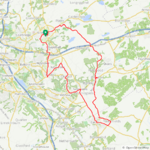
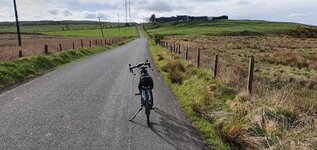

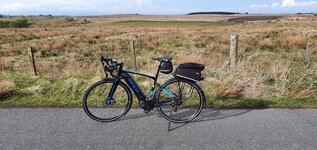
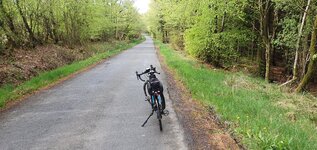
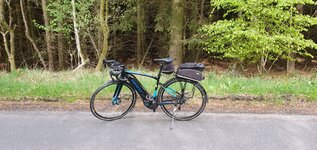
Come on, an e-biker would be expected to read an e-book

The most comfortable saddle for my backside!